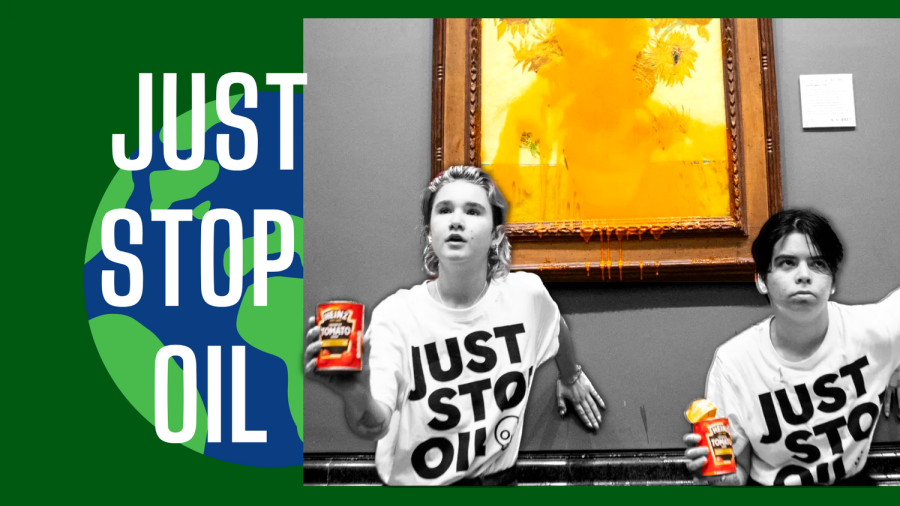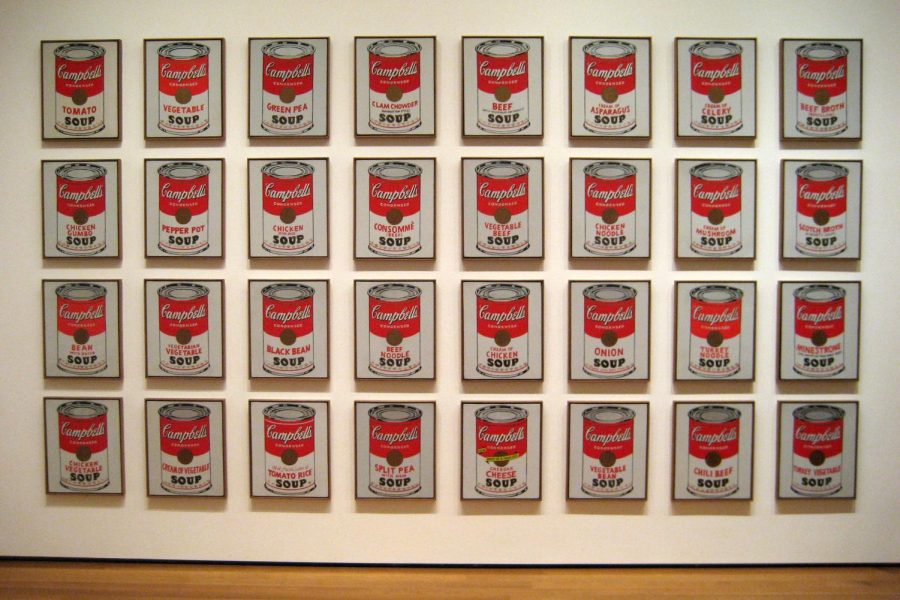Recent Climate Change Stunts Hurting their own Cause
November 18, 2022
Throwing soup at art will not save our planet.
On October 14th, the London-based climate change activist group Just Stop Oil (JSO) made national headlines when two protestors threw tomato soup at Vincent Van Gogh’s Sunflowers painting and glued their hands to the wall. “What is worth more: art or life? Are you more concerned about the protection of a painting or the protection of our planet and people?”
This stunt might seem bizarre, but it has been a norm since the group started its protests at the beginning of 2022. Just recently, on November 9th, the activist group headed to the M25, a very busy motorway in London, to blockade roads and climb gantries in protest, resulting in the M25 being temporarily shut down.
It seems that the JSO method of protesting has been influential for other environmental groups. For example, on October 22nd, the German environmental group Letzte General threw mashed potatoes at another famous painting, Haystacks by Monet.
On November 3rd, two Belgium protestors glued their hands and attempted to glue their heads onto Johannes Vermeer’s, Girl with a Pearl Earring.
On November 12th, two in Australia scribbled a blue marker over Andy Warhol’s Campbell’s Soup I.
But why go to such extremes towards something that has nothing to do with the message? JSO’s goal is to stop the U.K. government from progressing with new oil and gas projects because fossil fuels are a significant cause of air pollution and global warming. If you are willing to go to such extremes for your reason, you should take it to the targeted audience: the government. Though the reasonable actions of going against oil and gas companies might not receive as much attention as the art terrorism, it’s better than being counter-productive and getting more people to turn against the cause.
After an email chat with Indiana environmentalist Delaney Barber from the Hoosier Environmental Council, she says that in regards to JSO, “non-violent direct action and civil disobedience are just one pillar of advocacy and disrupting the status quo or ‘business as usual’ is important in the climate movement. The Climate Advocacy Lab touches on the importance of using disruptive capacity in the climate movement. Disruptive capacity has to be implemented with other aspects in mind to make a lasting impact and to accurately show people’s commitment to the cause. However, disruptive actions can cause backlash, come with risks, and unintentionally hurt others.”
“Another protest I saw using disruptive capacity, involved individuals going into a store and pouring milk out on the ground to bring attention to a plant-based diet and climate change. This comes with legal risks, it wastes food (which goes against their goal), and the consequences of clean up fall on grocery store workers. We want to avoid unintentionally harming others that do not directly perpetrate the action you are fighting against.”
Overall, Just Stop Oil’s tactics do not work on their own. People who are uninformed or unconvinced about the issue of climate change most likely do not feel encouraged to change their minds by seeing people throwing soup at art or temporarily closing down a major motorway. The actions seem irrelevant and unreasonable, ultimately making the cause seem unreasonable; and the cause is extremely important. To get your message across, your protest must be specifically targeted. If you owe the people an explanation afterward, you didn’t do it right.
So if what JSO is doing is wrong, what can we do locally to help the cause? Barber says, “There are a lot of things we can do to help our environment. If you have the means and access to make conscious choices about what you are buying and what you are using, start thinking about ways you can reduce your consumption and reuse what you already own. However, donating your time is just as important. You can do this by holding our polluters and lawmakers accountable for their actions. This includes, but is not limited to: calling, emailing, signing petitions, attending sit-ins, or attending school board meetings.”
Barber also kindly included other groups with which the Indiana youth can get involved, such as the Earth Charter (EC) and Confront the Climate Crisis (CTCC). CCTC will be advocating for climate again at the statehouse in 2023. EC has a youth climate camp and a Thriving Schools Challenge. This year’s projects include native & pollinator gardens, produce gardens, compost projects, and food waste capture, all of which help mitigate/adapt to climate change and help our environment.
To support the Hoosier Environmental Council, check out and follow their social medias:
- Instagram: @hoosierenvcouncil
- Twitter: @HEC_ED




